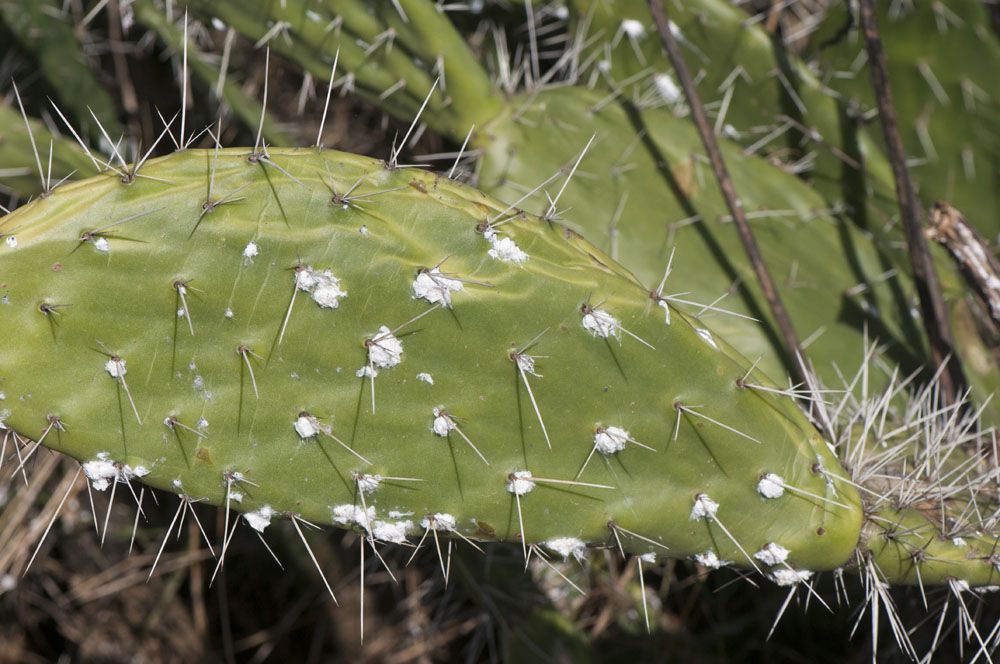
Cochineal scales – Dactylopious spp.
Cochineal Scales: Appearance, Territory, Damage, and Life Cycle
Latin Name: Dactylopious spp.
Appearance: Cochineal scale (Dactylopious spp.) bugs are most usually seen on Opuntia cactus. It is a New World bug that was employed by the Aztecs for dying and painting. This bug is largely a sessile parasite endemic to tropical and subtropical South America to North America (Mexico and the Southwest United States), feeding on plant moisture and nutrients. The insects are discovered on the pads of prickly pear cactus, brushed off the plants, and dried.
Dactylopious spp. settled stages feature a brilliant red body. Female adults are 1/16 to 1/4 inch long. Cochineal scales are motionless and coated in whitish, sticky wax, with the exception of pinkish crawlers and mature males. Unless the body cover is perforated, their red hue is frequently hidden. Adult males have only one set of wings and two long, thin tail filaments.
Hosts Plants: Dactylopious coccus is endemic to tropical and subtropical South America, as well as Mexico, where their host cacti grow naturally. They have been widely distributed in many areas where their host cactus flourish. These little insects feed on the leaves of the cactus. The cochineal scale on the cactus is a nuisance at first, but in severe infestations, it can weaken and destroy the plant.
Territory: South America and North America
Damage Insect Cause: Cochineal scales, when numerous, can restrict prickly pear growth and induce chlorosis where they feed in clusters. In addition to fouling plants with sticky wax and causing red stains when crushed, continuous feeding by profuse cochineal scales can cause severe deterioration and finally death of prickly pear.
Life History and Habits: Cochineal insects are flat, oval-shaped scale insects with delicate bodies. They use their beak-like mouthparts to enter the cactus and feast on its fluids, keeping motionless unless frightened. The fertilized female grows in size after mating and gives birth to small nymphs. To defend themselves from water loss and excessive light, the nymphs produce a waxy white material across their body. This material gives the cochineal bug a white or grey appearance on the surface, while the body and nymphs create red pigment, giving the insect a dark purple appearance on the inside. Adult males differ from females in that they have wings and are considerably smaller.
You may identify a plant that has been highly infested by cochineal scales. The most damaged pads should be pruned and discarded. Wash away the waxy coating of the scales with a strong spray of water, and on the exposed scale bodies, apply insecticidal soap.
